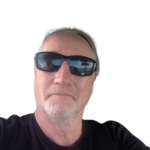
Retargeting Done Right: Aussie Strategies That Don’t Feel Creepy
Boost Sales with Retargeting: Turn Window Shoppers into Buyers!
Imagine browsing online for your dream vacation – a luxurious escape to the Whitsunday Islands. You find the perfect resort, picture yourself snorkeling in crystal-clear waters…but then work calls, the kids need dinner, and poof! The vacation dream gets pushed aside.
Wouldn’t it be amazing if a few days later, an ad for that exact resort pops up on your Facebook feed with a special discount? That’s the magic of retargeting – reminding Aussies who showed interest in your product or brand and giving them a nudge to return.
Retargeting has become even more essential in Australia, with a whopping 98% of website visitors leaving without making a purchase Source: Invespcro. Let’s re-engage those potential customers!
Building Your Retargeting Audiences: The Foundation
You can’t retarget without knowing WHO to target. Facebook offers immense flexibility:
-
Website Visitors: The classic. Install the Facebook Pixel (bit of code on your website) to start tracking visitors. You can even target visitors to specific pages! Someone who looked at your pricing is a hotter lead than someone who only glimpsed your home page.
-
Video Watchers: Aussies love video – a trend Facebook lets you capitalise on. Target people who watched a certain percentage of your videos about a specific product or service.
-
Customer Lists: Got an email list? Upload it! Target previous customers for new offers or to revive lapsed ones with incentives.
-
Engagement Retargeting: Did someone like your Page, interact with a post, or attend your Facebook event? They’re already showing brand connection and are ripe for retargeting.
The Aussie Angle: Location-Based Retargeting
Did you know you can target Australians who were physically near your store recently? Great for brick-and-mortar businesses! Or, target Aussies who like pages related to your city. This goes beyond basic interests to indicate true “local” intent.
Dynamic Ads: The Personalised Touch
These take retargeting to the next level! Instead of a generic “Come Back!” ad, dynamic ads show the exact product or service the person viewed. Key for Aussies with short attention spans or browsing lots of similar options.
Think of it like that Whitsunday Islands resort ad displaying the specific room type and dates the person searched for. That’s way more likely to convert than just their logo.
Crafting Retargeting Messages That Work
Don’t just repeat what they already saw. Here’s where you get creative to win back those Aussie customers:
-
Scarcity as a Tool: “Limited Time Offer,” “Only a Few Rooms Left” taps into the Aussie fear of missing out (FOMO) and prompts action.
-
Address Objections: Did someone leave their cart full? A retargeting ad with “Free Shipping” or “Easy Returns” lessens hesitation.
-
Social Proof is Powerful: Testimonials or user-generated content in ads builds trust, reminding Aussies others enjoy your product.
-
Multi-Stage Retargeting: For bigger purchases, create a series of ads. The first reintroduces the product, the second might be customer reviews, the third a compelling discount.
The Retargeting Trap to Avoid: Frequency Fatigue
Seeing the same ad NON-STOP is annoying. Australians will tune it out, or worse, view your brand negatively. Here’s how to avoid this:
-
Frequency Caps: Facebook lets you limit how often someone sees your ad in a given period.
-
Ad Variations: Change up images and copy to keep things fresh, even for the same audience.
-
Time Limits: Run retargeting campaigns for a specific duration, then give it a rest.
-
Exclusion Audiences: Exclude people who already bought–you don’t want to retarget a paying customer who needs support, not another sales pitch!
Retargeting Success Stories: Aussie Edition
Need some inspiration? Here are examples adapted to the Australian market:
-
Local Gym: Retarget Aussies who visited the “Membership” page with a free class pass ad, focusing on location (“Join your neighborhood gym!”)
-
Ecommerce Fashion: Abandoned cart? Retarget with the item AND a discount, but make it time-sensitive (“10% off your order, expires in 24 hours!”)
-
Travel Company: Australians who watched a video on “Ultimate Aussie Roadtrips” get retargeted with blog posts about the top routes or special rental car deals.
Beyond the Blog: Retargeting Isn’t One-Size-Fits-All
-
Industry Matters: Australian B2B audiences have longer decision cycles. Retargeting there might be less about immediate sales, more about staying top-of-mind.
-
Budget Conscious? Retargeting engaged Page followers is cost-effective. They already know you, making them warmer leads.
-
The Pixel Power: Truly effective retargeting requires the Pixel on your website for the most detailed tracking. If installing code is intimidating, here’s your access to our “professional grade SOP’s library” that will give you a comprehensive, easy to follow guide on exactly to do that and so much more!
Remember, retargeting is about building relationships with potential customers in Australia, not just nagging them. Share your retargeting success stories or biggest challenges in the comments below!

 Red
Red 







